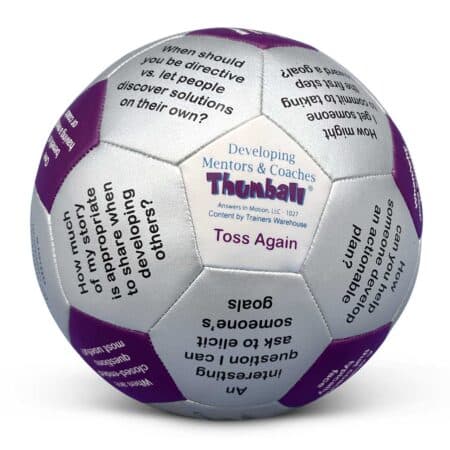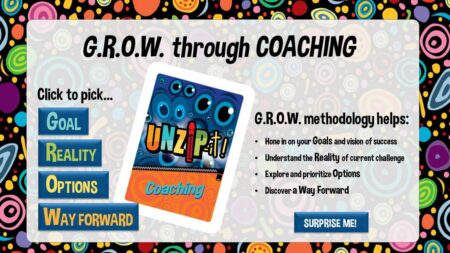Where Training and Coaching Collide
Training and coaching are siblings in the performance improvement and skill-development world — related but quite unique when compared to each other. By understanding them more thoroughly, we can harness resources to maximize the impact of each.
How Training and Coaching Differ
Training typically involves imparting knowledge and specific skills through structured programs. It follows a predefined curriculum, often focusing on standardized content and techniques. It is instructor-driven, aiming for mastery through repetition and practice.
Coaching, on the other hand, is a more personalized and collaborative process. It revolves around unlocking an individual’s potential, guiding them to find solutions, and fostering self-discovery. Coaches facilitate goal-setting, reflection, and continuous improvement. Unlike training, coaching is learner-centric, emphasizing individual growth, problem-solving, and adapting to unique circumstances. While training provides a foundation, coaching focuses on personalized development, addressing specific challenges and goals.
When to Use Training and Coaching
Training, effective for disseminating information and ensuring a consistent understanding across a group, is best suited for situations with a defined set of skills or knowledge that needs to be acquired by individuals. Many trainers consider coaching to be an important next step, picking up after the skill transfer. As a follow-up to basic training, coaching requires guidance, support, and feedback specially tailored to the recipient.
Coaching often involves:
- Bolstering an individual’s skills.
- Encouraging individuals to follow through on their goals.
- Guiding people through their own thinking processes so they can figure things out on their own.
- Giving outside perspective, viewing what you may not be able to see from your own perspective.

Developing Mentors & Coaches Thumball $32.95BUY NOW
Choosing and Developing Coaches
While coaches don’t need deep expertise in the area in which they are coaching another, a handful of skills and resources are necessary for success. Whether you’re considering coaching others yourself or choosing colleagues to coach one another, be sure they’re equipped to be effective. They’ll need:
- Sense of caring – caring is not innate to everyone, but it is a required quality for those seeking to be coaches. If an individual’s EQ (emotional intelligence) is lacking, be sure to help them develop that skill before charging them with a coaching task.
- Time – if individuals don’t have ample time to dedicate to coaching, don’t charge them with the task. Remember that coaching takes time, patience, and ongoing support.
- Curiosity and questions – those who are curious and inquisitive will be your most successful coaches.
- Ability to listen well – because coaching often requires self-reflection and discovery, skilled coaches need to be quiet. They must be disciplined in sitting back, watching, taking notes, and listening to hear both what is being said and what is not said.
Tools for Coaching
Develop and enhance your coaches efforts by supplying them with professional tools and resources.
Conduct Assessments
HRDQ has created a series of What’s My Style? assessments. Through the What’s My Coaching Style Assessment, you can understand an individual’s coaching style by measuring their tendency to be Direct, Spirited, Considerate, or Systematic.
Ask Great Questions
Asking great questions is core to effective coaching. The G.R.O.W. Model, focusing on questions organized around these four categories, continues to grow in popularity:
- Goals – articulate what you’re trying to achieve
- Reality – understand the current situation and hurdles
- Options – explore a range of avenues forward
- Way Forward – develop plans to affect change
Several Card Decks utilizing this methodology are worth exploring, including Q-Cards and UNZIP-it Coaching Questions.
Develop Emotional Intelligence
- Emotional Intelligence Thumball: Each conversation prompt on the Emotional Intelligence Thumball indicates the skill with which it is associated. Use the two-letter EQ skill codes (MO, SA, SR, EM, and SS), to build awareness of the skills, while building the skills themselves! For example:
- EQ GAME – This amazing emotional intelligence group exercise lets players practice emotional intelligence skills! Players pick an EQ Game Situation Card and read it aloud (the game includes 50 of these Situation Cards). Next, players choose a Self-Awareness Card that describes how they’re feeling. They also play a few EQ Skills Cards (Self-Management, Social Awareness, or Relationship Skills), which might help them deal with the sticky situation. The goal of the EQ game is to provide practice in emotional intelligence skills.
- Developing Emotional Intelligence Coaching Cards
- More Resources for Developing Emotional Intelligence
Record Notes and Check Understanding
By recording what you hear in a way that the speaker can see what you’ve heard, or by repeating what you heard, coaches can check their understanding. Moreover, when those who have expressed themselves see or hear their ideas reframed, they have an opportunity to rephrase, revise, clarify, or reflect on what they said. Lending to both greater self-understanding and mutual understanding. The Tabletop Whiteboard makes it easy (and kind of fun) to do this!
Many of these resources are available at Trainers Warehouse. For more life-coaching resources, try the Coaching Tools Company.
Overcome Discomfort
Neither coaching nor agreeing to be coached is easy. Dr. Atul Gawande expresses it well in his insanely popular TED Talk. However the payoff for excellent coaching is well worth the investment. If you have a few extra minutes, have a listen!
In his TED Talk, Want to Get Great at Something? Get a Coach, Dr. Atul Gawande explains that many professional situations assume that once you’ve become an expert in your field, you no longer require training or learning. This model, he says, is very different from the professional sports model, where players assume they always need someone to watch what they’re doing and give them feedback. Following the pro-athlete model, Gawande, a successful surgeon, retains a coach to watch him do surgery and give feedback. As uncomfortable as the exercise felt, he tells the story of how invaluable it was.


